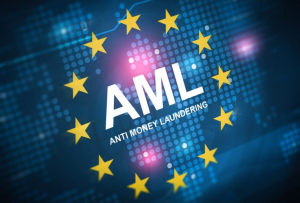A first view into the future EU AML Authority
On 20 July the European Union published the long anticipated proposal for the establishment of the Anti-Money Laundering Authority (AMLA). According to this proposal, the new European authority is essential to address the current shortcomings in AML/CFT supervision, which is currently Member State-based.

The report of the European Banking Authority (EBA) on approaches of competent authorities to AML/CFT supervision reflects that despite the progress that has been made until now, not all competent authorities are able to cooperate effectively with domestic and international stakeholders.
According to the Commission, the methods to identify risks and to apply the risk-based approach to supervision also diverge. While some risks remain national in nature, others are of horizontal nature or may impact the entire Union financial system. Member States stressed the need for a common, consistent methodology to assess and identify risks.
In order to address these shortcomings, the AMLA will become “a centrepiece of an integrated AML/CFT supervisory system”, consisting of the Authority itself and the national authorities with an AML/CFT supervisory mandate (hereinafter ‘the supervisor authorities’).
AMLA will be a body with legal personality, which means that it will enjoy the legal capacity granted to legal persons under national law, most importantly it can be a party to legal proceedings. And it will take the form of an EU decentralised agency.
Let’s dive into the tasks and powers of authority of AMLA.
AMLA will have to monitor developments across not only the internal market, but also in third countries and assess the threats and risks related to money laundering. It will also establish a database of information collected from the supervisory authorities of every Member State.
The Authority has a very important role in relation to the implementation of the Sanctions regimes. It will monitor and support the implementation of asset freezes.
The Authority also has particular powers related to each relevant stakeholder:
With respect to selected obliged entities AMLA shall carry out direct supervision and shall ensure group-wide compliance with the requirements laid down in the AML Directives and Regulations and other AML related obligations, as well as carry out supervisory reviews on individual entity and group-wide level to assess if the processes and mechanisms put in place are effective in fight against money laundering.
Selected obliged entities refer to a number of the riskiest cross-border financial entities. The selection will take place every three years and for selection, entities must have activities in a minimum number of Member States, and they must be categorised in the highest risk category by the supervisory authorities of some of these Member States. There is a clear methodology of selection laid out in Chapter 1, Section 3 of the Regulation.
With respect to financial supervisors, the authority shall carry out reviews to ensure they have adequate resources and powers necessary for the performance of their tasks.
With respect to non-financial supervisors, the Authority shall coordinate peer reviews of supervisory standards and practices and request non-financial supervisors to investigate possible breaches of requirements applicable to obliged entities and to consider imposing sanctions or remedial actions in respect of such breaches.
With respect to FIUs in the Member States, the Authority shall play a significant role in the identification of relevant cases and the development of appropriate methods for the joint analyses of cross-border cases. The Authority will also make available services and tools, and expert knowledge and specialized training on detection and analysis of suspicious transactions methods.
The Authority also has an indirect supervision prerogative. This translates into the coordination and oversight of national AML/CFT supervisors, including self-regulatory bodies in certain Member States for certain non-financial obliged entities. The Authority will have the power to address guidelines, opinions and recommendations to national supervisors and self-regulating bodies.
Lastly, AMLA has the power to impose administrative pecuniary sanctions and periodic penalty payments, as laid out in article 20 and 21.
Once the proposal of the regulation is approved, the competences of the European Banking Authority will be removed in the area of AML/CFT and transferred to the Authority. The Authority will be established as of 1 January 2023 and the activity of direct supervision will commence at the beginning of 2026.
1., Proposal for a Regulation of the European Parliament and of the Council establishing the Authority of Anti-Money Laundering and Countering the Financing of Terrorism and amending Regulations (EU) No 1093/2010, (EU) 1094/2010, (EU) 1095/2010, p. 3, par. 2
- Daria Patrascoiu
- 27 August 2021
